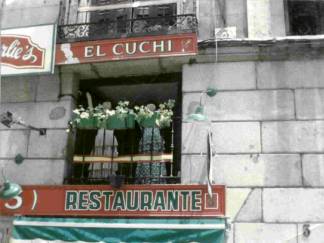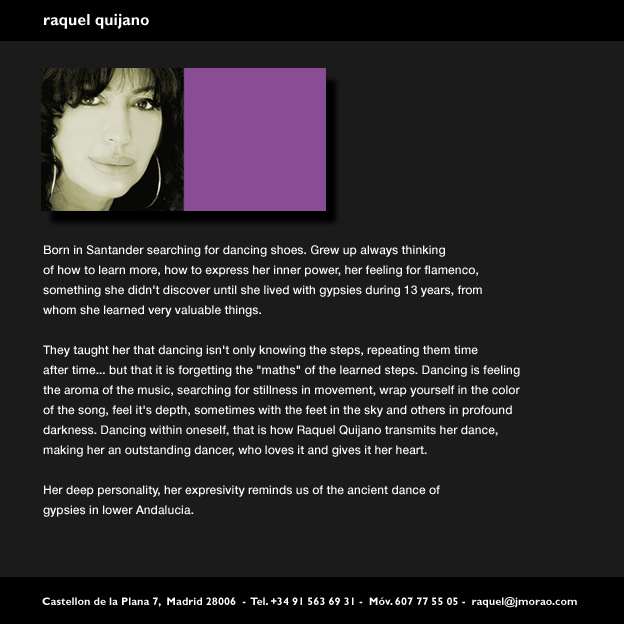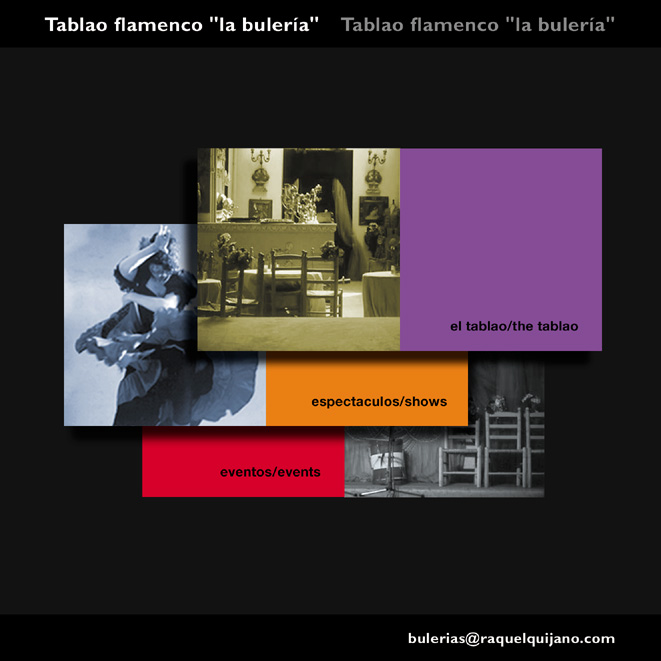


FLAMENCO AND MARIACHI



1. What attracted you to the world of flamenco?
I lived in Philadelphia for many years and was heavily involved with the Hispanic Community there. I had the good fortune of meeting Julia Lopez of Flamenco Ole. I started taking classes with her as a past time but soon became impassioned and totally submerged and obsessed by the art and its many facets.
2. And where did you study it?
As mentioned I started my studies in Philadelphia in 1989. Later when I moved to Florida I met and took classes with Teo Morca who lived briefly in Gainesville Florida before moving to Costa Rica.
3. You have formed a flamenco society in Florida, of all places?
When I moved to Jacksonville Florida, there was virtually no known Flamenco groups. Then I met Dulce Anaya of the Jacksonville Ballet and she invited me to come to her studio to teach some of her dancers some dances such as Sevillanas. Word of mouth soon spread and I found myself teaching at The Boleros Dance studio with 3 guitarists and 20 dancers, including children.
Our Dance Troupe is called , "Flamenco De La Costa". And I have co-founded the "Flamenco Society of Northeast Florida" with Lisa Benton of "Aire de Espana".
4. Do you have a webpage or place where people can contact you who are interested in the activities of your society?
Unfortunately We do not have a website yet. But I am listed on a few dance directories through a regular web search of Flamenco in Florida. Or anyone can call the studio at 904-730-9786 or 904-721-3399.
5. You also offer flamenco classes and training?
Yes we teach beginner and intermediate Flamenco.
6 Do you sing or just dance?
Just dance at the present time. No cante, We also have the good fortune of having 3 Flamenco Guitarists who play for us.
7. Though you are established, even now, how much training and practice must you devote to the art?
We take a fun approach to Flamenco. But, as you know it is a very intense art form and has many elements such as Palmas, Taconeo, Floreo etc. (Just to scratch the surface). I believe it takes years to be proficient, however, we start with a few simple Tangos, the Sevillanas, etc which gives a foundation to start enjoying the movement early in the study. It may take years to achieve professional results, however, Flamenco comes from the heart, therefore, it does not take years to become a "Flamenco".
8. The flamenco originated in Spain, but is there much itnerest in this in the USA?
In my opinion, it still maintains somewhat of an "underground" following. However, the Duende and Jondo as we call it creates a mysterious attraction which is growing, but has not yet reached the forefront of American culture. I feel it is grossly underestimated and sadly it is still pushed to the background by even the artistic community. It is very difficult to get our artistic educational system (schools etc.) to get involved in learning and teaching Flamenco.
9. Why is that?
I think there is a certain element of intimidation because of the lack of education and awareness. It is not an easy art form to grasp physically or mentally. Even the most talented of Classical Guitarists shy away because of it's complexities. It is difficult to attract American Males to the dance. Albeit very masculine. Once again, I believe that lack of education and understanding has kept some folks from exploring it. Flamenco for me is more than music and movement. Often it takes years for beginners to grasp that there is a spiritual concept of the art. Sadly, the American culture is somewhat stifled and is intimidated by this art form.
10. Are there other forms of music you have also studied?
Not really, I studied piano and guitar as a child. But very superficially.
11. Anything else you would like to talk about concernign flamenco?
Another beautiful part of this art form is that it conforms to no age, no body style, etc. Unlike Ballet or Ballroom, it is freedom. A dancer does not need to be 5'10", anorexic, or young, to be a beautiful Flamenco dancer. Some of my best dancers are full figured, mature, women who through their own life experiences bring a richness to their expression which can not be learned in a classroom and often can not be expressed through youth.
I've seen many ballerinas torture themselves physically and emotionally to become prima ballerinas, Only, to experience heart break when they become too tall, too short, too old, or gain weight. That would never happen with Flamenco. A Flamenco dancer will dance all of their lives, regardless of what they look like in terms of weight or age.
12. Closing comments?
In closing, I would give a warning. There is no treading lightly into Flamenco. Once one surrenders to the world of Flamenco it nevers leaves you. It becomes you. Flamenco is not just dance and music it is life.
Naomi Vail
The Flamenco Society of Northeast Florida
Flamenco de la Costa
904-730-9786
904-607-6697
Home Page
Links
Notes
En Espanol
Mercado/Store
Who's Who
Museo Taurino De Salamanca
Toros
Fernando Dos Santos Photo Gallery
Jesus Solorzano Photo Gallery
Flamenco
European Art/Music/Culture/Film
Book Reviews
Bloodless Bullfights
Plazas De Toros
Nogales Gallery
Cojidas
Pablo Hermoso Gallery
Interviews
Portuguese Bullfighting
Dale Pierce Book Signings
Contact Information